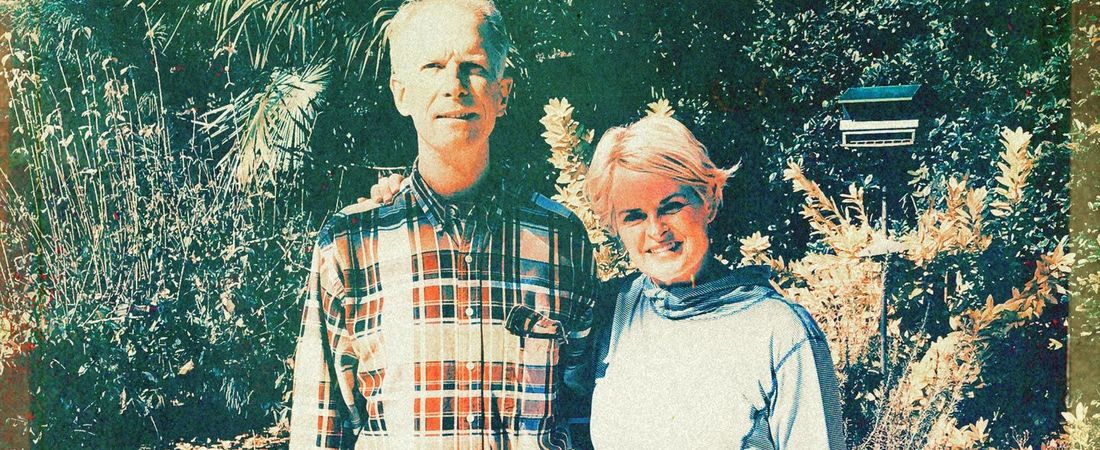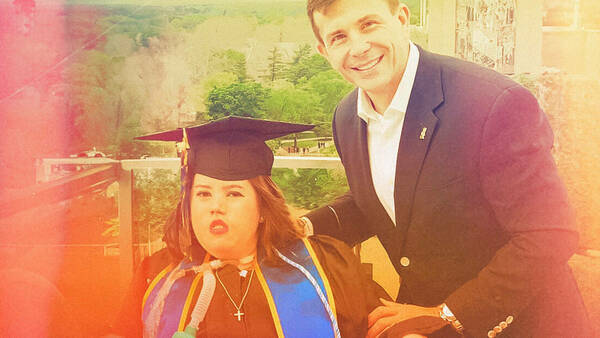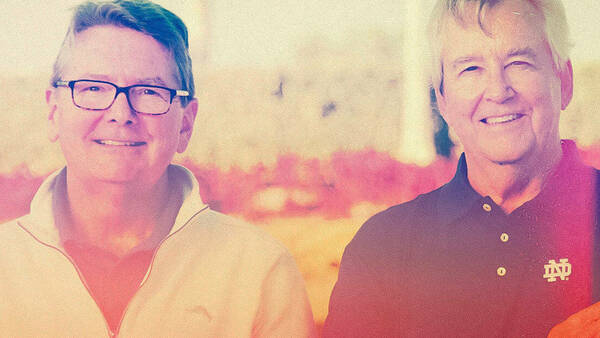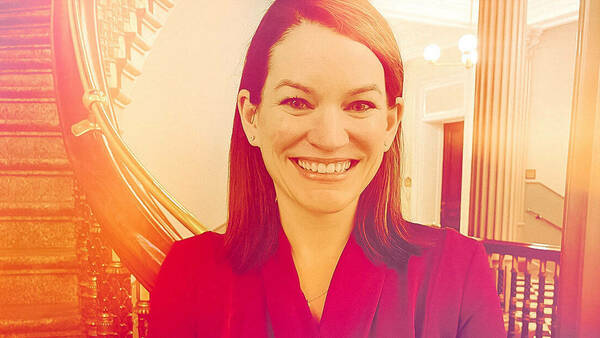When his kidney function began to decline, Patrick Laughlin ’76 emailed almost 100 cousins, hoping to find a match who could provide a transplant. Patti (Bergin) Bedard ’86 answered the call.
Laughlin recently celebrated his 64th birthday with his wife and 10-year-old son. He’s preparing to compete in the 10K Peachtree Road Race in Atlanta, where he lives, thanks to the renewed vitality that came with Bedard’s kidney.
“There’s no doubt about it, she’s a saint,” Laughlin says.
A Long Wait
Laughlin’s life-changing transplant surgery in January followed several years of trying to find a donor, and decades of knowing that his polycystic kidney disease, an inherited condition that causes kidneys to lose function over time, might take a devastating toll. His maternal grandmother died in her 50s, and his mother passed away at 72. In 1986, tests confirmed that Laughlin also had the condition.
“I realized that I couldn’t do much about that, but I needed to take care of everything else,” Laughlin says.
So he maintained an active lifestyle, swimming and running competitively, and enrolled in clinical trials at Emory University Hospital. That meant regular checkups, which for years showed a very slow decline in kidney function—something he knew could quickly change at any time.
And then, about three years ago, things changed. His kidneys were functioning at about 18 percent of capacity. That meant he would need to find a donor. The alternative was dialysis, which would require frequent and time-consuming medical care that might prolong his life a few years. So Laughlin began contacting family members.
Answering the Call
Bedard’s brother discovered he wasn’t able to donate, so in August of 2017 he called her and urged her to get tested. She found she was a match and navigated a battery of psychological and physical health screenings designed to ensure that she would be a good candidate to donate. Everything checked out, and in January, she made the trip from Rochester, New York, to Atlanta. There, she underwent a 3 ½-hour surgery to provide her cousin with a new lease on life.
“I didn’t think it was going to be so meaningful and so overwhelmingly positive when I was going through the testing process,” Bedard says. “It didn’t really dawn on me how extraordinary a thing it was until after the surgery.”
She urges anyone to who’s considering kidney donation to educate themselves, noting that it’s a deeply personal decision—and one that can make a big difference. More than 100,000 people in the United States are on a waiting list for a kidney transplant, and each year, approximately 4,500 people die while waiting to find a donor.
Bedard’s decision to donate has brought her closer to her cousin, she says, recalling how she stayed with Laughlin and his family for a couple weeks after the surgery. On her last night in town, family members gathered, including her mother as well as her brother and his family. They shared a poignant moment over dinner as Laughlin described what Bedard’s gift meant to him.
“Patrick told us how a client in the horticultural business once gave him a bonsai plant,” Bedard says. “Patrick went to thank him, and the man told him, ‘You don’t thank someone for giving you something that’s living—you just tell them that you will take care of it.’ Then Patrick continued, ‘I owe a lot a of gratitude to everyone here, so I will just say I will take care of this kidney.’”
There wasn’t a dry eye in the room, Bedard recalls. And that moment has stayed with her and Laughlin.
“So he doesn’t thank me for it, he’s just taking care of it,” she says. “I get these little texts every so often: ‘I ran here.’ Or I get a text saying that my kidney is celebrating an extra birthday this year. He just got back from a trip to Europe, so I think I should get credit also for the frequent flyer miles now.”
A New Life
Laughlin is savoring his newfound vitality. Before the surgery, as his condition worsened, he had begun sleeping more to alleviate his falling energy levels. Activities like running became a chore, and he had struggled to finish his last race, walking at the end. But now he’s training for his next 10K in July, when he plans to run across the finish line.
“I can travel and do everything I did before,” says Laughlin, who works as a real estate agent. “But the part that amazes me is that I feel like I’m 30 or 40 years younger.”
Bedard, for her part, is thrilled she had the opportunity to help her cousin.
“I’m certainly not a saint or hero in any of this,” she says. “This is just something I did because I could do it. So why not? I’m just so happy I was a match. You get to a certain point in life—I’m 53 and I’ve lost my father, I’ve lost my brother, I’ve lost people to cancer—and sometimes you just think, ‘I wish I could get those guys back for just one day.’ So I did it as much for Patrick’s wife and his son, Martin. Now Patrick can play basketball with his son, he can play tennis, he can go swimming. He’s got a good life with his wife and son, and that’s wonderful to see.”



